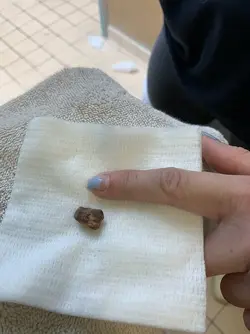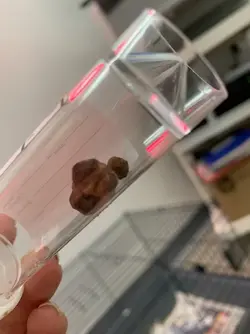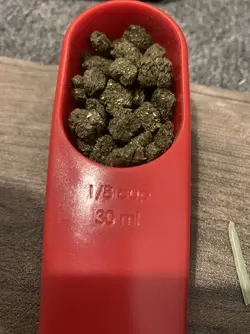Hi!
Light bleeding can still happen in the first few days after an operation from the damage to the bladder (bladder trauma) until the natural healing process gets fully underway from day 2-3. As long as your girl is OK in herself and not getting any worse I would not worry. you should hopefully see a big improvement as soon as the healing process is setting in fully, just from the sheer relief of having that stone out.
Here are our post-op care tips:
Tips For Post-operative Care
What you should do is review your diet, especially re. filtering the water and reducing the daily pellet intake to 15 ml (1 tablespoon or 1/8 cup). These are the two biggest areas calcium comes into the diet but most owners are only concentrating on the veg. You can't cut all calcium out of the diet as that is long term as damaging as well so you have to find the right balance.
Here are our diet tips. If your piggy is not an avid drinker (most bladder piggies aren't), please make sure that you include a good measure of fluid rich veg like cucumber, lettuce, celery or fresh green growing grass in the diet to help flush the bladder regularly and miminise the risk of another build-up. The calcium absorption process is rather complex; it depends what is going wrong with it. Diet is the best way to prevent another one in the longer term. It takes however some weeks until the changes have worked their way through the body. The more closely the diet resembles their original diet of mainly grass/hay with some forage for trace elements, the better.
Here is the link:
Long Term Balanced General And Special Needs Guinea Pig Diets
The other area where you can really help with the comfort and healing is with glucosamine support. This is not a medication but a food supplement, so most vets won't prescribe it. However, the walls of the bladder are coated with glucosamine to prevent the corrosive urine coming into the contact with raw tissue. When a stone is banging round the bladder or urethra, then it is badly scratching that coat and irritating the bladder and the walls of the tubes. The glucosamine will help with that aspect and with the healing process in the urinary tract.
It really makes a difference in our long term and in my personal experience with bladder stone piggies!
We recommend to mix the contents of 1 capsule of Feliway cystease with 2 ml of water and then syringe 1 ml twice daily or 2 ml every 24 hours. Cats are the other species particularly prone to urinary tract problems. Cystease capsules are the easiest way of dosing the glucosamine. always shake well before use. Again, glucosamine needs a bit of time to build up in the body and is not an instant healer.
All the best with the recovery. Please take the time to read the links; your diet changes can really make the difference between more stones or no stones in the long term.



